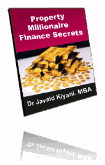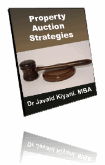An Assured Shorthold Tenancy (AST) Agreement is a contract entered into between landlord and tenant on a short term basis. It has become widespread for its merit over other terms of tenancy. With an AST, the tenant’s right of security of tenure which is particularly known as the right not to be dispossessed of the property without just cause is less than it would have been prior to the introduction of ASTs. Consequently, the landlord can acquire possession of the property without difficulty if he follows the correct measures.
As a landlord you need to be aware of the following when renting your property:
Firstly, the agreement must be entered into by the proper parties; namely the landlord and the tenant. If the object of the Assured Shorthold Tenancy (AST) Agreement is to only provide a room in a house or flat, it is further advised to execute a house sharing agreement. This agreement indicates the terms and conditions over the use of common facilities.
Secondly, the property rented out should be covered by an ordinary contract of insurance. This is to protect the landlord in the event of damage to the property. Insurance will be covered in greater detail in a later article.
Thirdly, since the Assured Shorthold Tenancy (AST) Agreement is only for a short term basis, there is no minimum term. Nonetheless, a landlord cannot recover possession of the property within 6 months after execution of the tenancy agreement. Thus, by implication, the minimum term is set to six months. This is without prejudice to any breach of contract by the tenant.
Fourthly, since the Assured Shorthold Tenancy (AST) Agreement is for a minimum period of 6 months by implication, the expiration of the term would cause its conversion into a periodic Assured Shorthold Tenancy (AST) Agreement . Thus, the duration would now be dependent on the terms and conditions of the rental fee such as weekly or monthly.
Upon the expiration of the fixed term under the terms of the Assured Shorthold Tenancy (AST) Agreement, the tenant may leave the property if he does not wish to stay there. If the tenant wishes to stay, but the landlord wants to regain possession of the property at the end of the fixed term, he needs to provide the tenant with 2 months notice in writing.
The termination of any contract must be undertaken with certain precautionary measures. Non-compliance of the necessary procedures could result in the landlord not being able to take possession of his own property. Thus, the execution of a notice to quit is an indispensable requisite. The notice should be served personally or through registered mail to the tenant as evidence that it is received by the latter.
One final note to add, the deposit must be held under the terms and conditions of a specific deposit scheme. The landlord is prohibited from holding the deposit himself. There are several schemes the landlord can use to protect the deposit. These will be discussed in a later article.
For further information, please visit http://www.yourpropertybible.com









